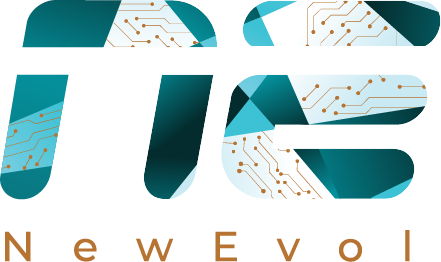Best Practices to Protect Industrial Control Systems (ICS) in 2025

Industrial Control Systems (ICS) power our manufacturing plants, energy grids, oil pipelines, and transportation systems. They are the silent workhorses behind industrial operations but they’re also becoming prime targets for cyberattacks. With the convergence of operational technology (OT) and IT, the need for robust ICS security has never been more urgent.
Let’s explore what ICS security is, why it’s essential, and the best practices to safeguard your industrial environment.
What Is ICS Security?
ICS Security refers to the protection of control systems used in industrial environments… such as Supervisory Control and Data Acquisition (SCADA), Distributed Control Systems (DCS), and other control system configurations. These systems manage everything from robots and generators.
Unlike IT systems, ICS environments prioritize availability and safety over confidentiality. Downtime or unauthorized changes can have catastrophic real-world consequences.. from halting production to endangering human lives.
ICS Security Best Practices
Industrial Control Systems (ICS) require a tailored cybersecurity approach, considering their critical role in industrial operations and their unique blend of legacy technology and modern connectivity. Below are essential best practices every industrial organization should follow to protect ICS environments from disruptions, breaches, and long-term damage.
1. Perform Network Segmentation
A flat network is an open invitation to attackers. ICS networks must be logically and physically segmented from corporate IT networks to limit exposure. By implementing firewalls, VLANs, and demilitarized zones (DMZs), organizations can control traffic flow between the business network and operational technology (OT) systems.
For instance, access to a SCADA system controlling critical infrastructure should never traverse the same network used for email or internet browsing. Proper segmentation reduces the blast radius of attacks and simplifies threat monitoring and incident response.
2. Employee Awareness and Training
Cybersecurity isn’t just a technical problem… it’s a human one. Engineers, plant operators, and maintenance staff often lack formal security training, yet they frequently interact with ICS systems. Even a single phishing email or misconfigured USB device can compromise an entire plant.
Regular, role-specific cybersecurity awareness training is crucial. Employees should be able to spot social engineering attacks, understand secure handling of portable media, and know how to report suspicious activity. Simulated phishing exercises and refresher courses can reinforce secure behavior.
3. Access Control and Authentication
Controlling who can access what and when… is foundational to ICS security. ICS environments often include shared workstations and legacy systems with weak or hardcoded credentials. This makes them vulnerable to internal misuse or external exploitation.
Enforce role-based access controls (RBAC), ensure each user has a unique ID, and implement multi-factor authentication (MFA) wherever feasible. All ICS components… HMIs, engineering workstations, PLCs… should require authentication and offer audit trails of user activity.
4. Patch Frequently
Patching ICS systems is notoriously challenging due to high uptime requirements and vendor constraints. However, unpatched software remains one of the most exploited attack vectors.
Establish a risk-based patching policy that accounts for both cybersecurity threats and operational constraints. Maintain a testbed environment to validate updates before applying them in production. Work closely with vendors to understand patch release cycles and emergency fixes.
5. Perform ICS Asset Discovery
You can’t protect what you don’t know exists. Many organizations lack an accurate inventory of ICS devices, protocols, firmware versions, and open ports. This creates blind spots that attackers can exploit.
Use automated asset discovery tools tailored for OT environments… ones that operate passively to avoid disrupting sensitive control systems. Maintain a continuously updated inventory and map dependencies across devices, networks, and systems to support risk assessments and incident response planning.
6. Secure Remote Access
Remote access is essential for diagnostics, vendor support, and maintenance… but it’s also a major attack vector. Insecure remote connections can grant attackers direct access to ICS devices.
Secure remote access with VPNs, session time limits, jump servers, and multi-factor authentication. Ensure all remote sessions are logged, monitored, and reviewed periodically. Whenever possible, enforce just-in-time access with predefined access windows and approval workflows.
7. Implement Least Privilege
The principle of least privilege ensures that users only have access to systems and functions necessary for their job roles. Excessive privileges increase the risk of insider threats and accidental changes.
For example, a technician tasked with monitoring sensor data shouldn’t have permissions to modify PLC programming. Use granular access control settings, regularly review privilege levels, and revoke unnecessary access promptly.
8. Incident Response Planning
When things go wrong and eventually, they might.. a well-prepared incident response (IR) plan can mean the difference between containment and catastrophe.
Develop an IR plan specifically for ICS environments, accounting for OT-specific risks such as physical safety and production downtime. Include communication protocols, escalation paths, offline backup strategies, and cross-functional team roles. Test the plan with tabletop exercises and real-world simulations.
9. Secure Physical Access
Cybersecurity often overlooks the physical dimension. Yet physical access to control panels, USB ports, or network switches can lead to severe compromises.
Implement layered physical security measures… secure enclosures for ICS hardware, access badges with logs, surveillance cameras, and restricted access zones. Regularly inspect physical infrastructure to detect signs of tampering or unauthorized entry.
10. Apply Authentication Management
Many ICS systems still use default credentials or lack centralized authentication, making them easy targets.
Implement centralized identity and access management (IAM) to manage authentication across all systems. Disable unused accounts, enforce password expiration policies, and audit authentication logs regularly. Central management also allows quick revocation of access when roles change or employees leave.
11. Monitor Network Baselines
Every ICS network has a normal pattern of communication… when you understand this baseline, anomalies become much easier to detect.
Use ICS-aware monitoring tools that can create and track baseline behavior across protocols like Modbus, DNP3, and OPC. Any deviation… like a sudden surge in traffic, unexpected IP address, or rogue command… should trigger alerts for investigation.
12. Secure Physical Assets
PLCs, RTUs, sensors, and actuators are often exposed in field environments and can be vulnerable to theft or tampering.
Use locked cabinets, tamper-evident seals, and environmental sensors to secure physical components. Track the location and health status of critical assets and ensure backup units are stored securely in case of failure or compromise.
13. Segment Networks
Beyond basic segmentation between IT and OT, ICS networks should have micro-segmentation between functional areas… such as safety systems, production zones, and third-party access points.
This approach limits the spread of malware and simplifies containment during an incident. Use virtual LANs (VLANs), access control lists (ACLs), and firewall rules to enforce logical separation.
14. Adopt Secure-by-Design Principles
Many ICS systems were never designed with security in mind. Moving forward, organizations should adopt secure-by-design practices at every stage… from procurement to deployment.
This means choosing vendors that offer secure configurations, encryption, patch support, and audit capabilities. During implementation, follow secure coding, configuration, and change management practices.
15. Automate Vulnerability Management for ICS
Manual vulnerability tracking is inefficient and error-prone… especially in dynamic or large-scale ICS environments.
Use automated tools that scan for known vulnerabilities without interfering with system performance. Prioritize remediation based on risk impact, and track the status of each vulnerability until it is resolved or mitigated.
16. Comprehensive Visibility
ICS environments are often siloed and lack centralized monitoring. This creates blind spots where threats can go undetected.
Deploy solutions that provide centralized, real-time visibility into all ICS communications, system behaviors, and device status. Dashboards should highlight abnormal events, system health, and policy violations across your entire environment.
17. Conduct Regular Security Assessments
Even the most secure ICS environments need regular evaluations. Risks evolve, systems change, and new vulnerabilities emerge.
Conduct annual (or more frequent) security assessments, including vulnerability scans, penetration testing (using OT-safe methods), compliance audits, and red team exercises. Use the results to refine your controls and close security gaps.
18. Continuously Monitor ICS for Threats
ICS environments need continuous monitoring tailored for OT networks. Standard IT security tools often lack the protocol awareness or context to detect OT-specific threats.
Implement continuous threat detection systems that understand ICS protocols and can identify threats such as unauthorized firmware changes, unexpected command sequences, or lateral movement attempts across devices.
19. Encryption and Data Protection
While encryption can be challenging in real-time control systems due to latency concerns, it remains essential for securing data… especially for logs, configurations, and control messages exchanged with external systems.
Encrypt sensitive data both at rest and in transit using ICS-compatible methods. Also, apply proper access controls to stored configurations and backups to prevent tampering or theft.
Final Thoughts
The industrial sector is the backbone of modern economies… and it’s more connected than ever. But connectivity comes with risk. Securing your ICS environment isn’t just about compliance or risk management.. it’s about protecting lives, economies, and national infrastructures.
Adopt a proactive, well-rounded approach to ICS security now… before attackers find a way in.
Protect What Keeps You Running With NewEvol
Industrial environments can’t afford blind spots or downtime. At NewEvol, we bring deep expertise in securing Industrial Control Systems (ICS) combining real-time monitoring, anomaly detection, threat intelligence, and automation to help you stay ahead of evolving risks. Whether you’re managing a smart factory, a power plant, or a critical utility network, our platform gives you the visibility and control you need to protect what matters most.
Your industrial operations deserve more than just protection. They deserve resilience. Let NewEvol help you build it.
FAQs
1. What is industrial control systems (ICS) security?
ICS security involves protecting industrial systems such as SCADA and DCS from cyber threats, unauthorized access, and operational disruption. The goal is to ensure availability, integrity, and safety in industrial operations.
2. What is the best way to counteract threats and protect our industrial control systems (ICS)?
A multi-layered approach works best: segment networks, control access, monitor for threats, and educate staff. Combined with proactive patching and regular assessments, these practices reduce the risk of successful attacks.
3. Which device types are commonly found in industrial control systems (ICS)?
Typical ICS devices include Programmable Logic Controllers (PLCs), Remote Terminal Units (RTUs), Human-Machine Interfaces (HMIs), sensors, and actuators.
4. What is the ICS-CERT (Industrial Control Systems Cyber Emergency Response Team)?
ICS-CERT, part of CISA (Cybersecurity and Infrastructure Security Agency), provides resources, threat alerts, and response support for ICS-related cyber incidents in the U.S. They help organizations strengthen their defenses and recover from attacks.

